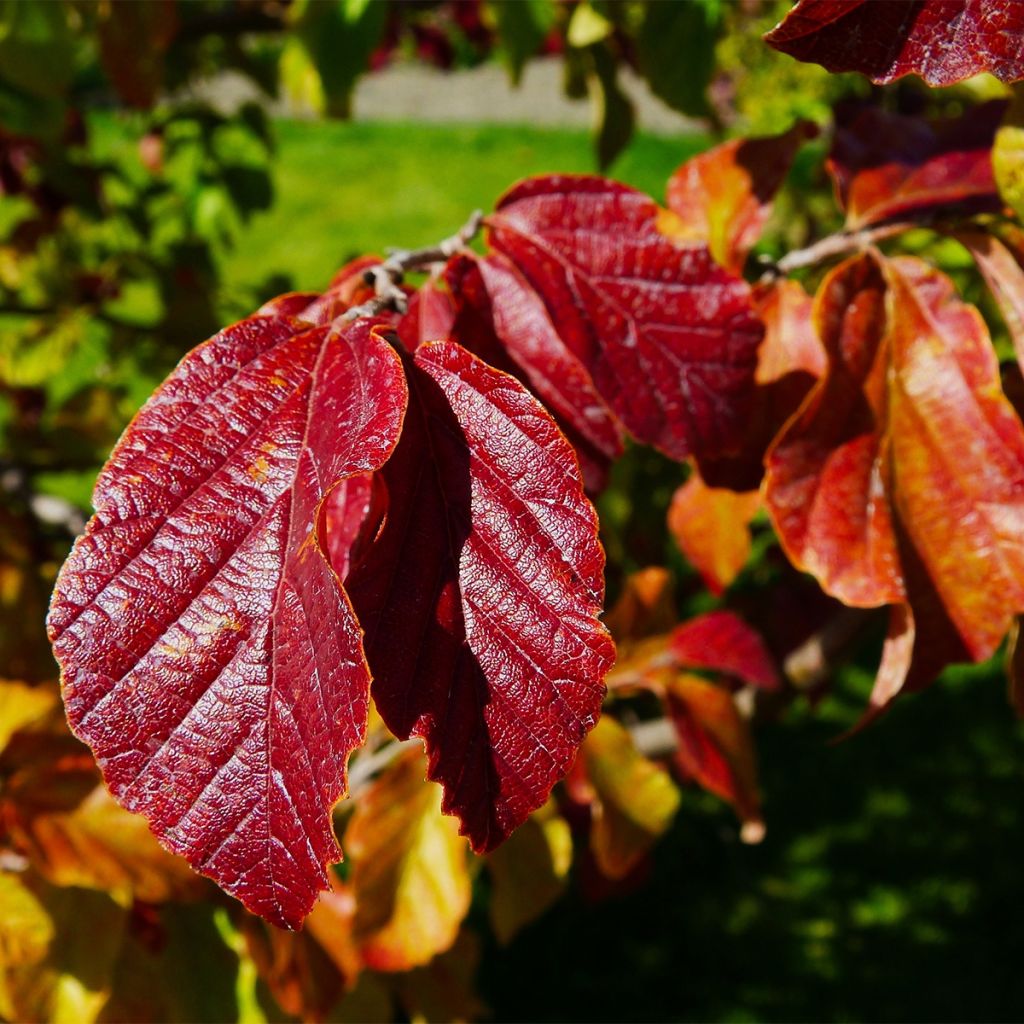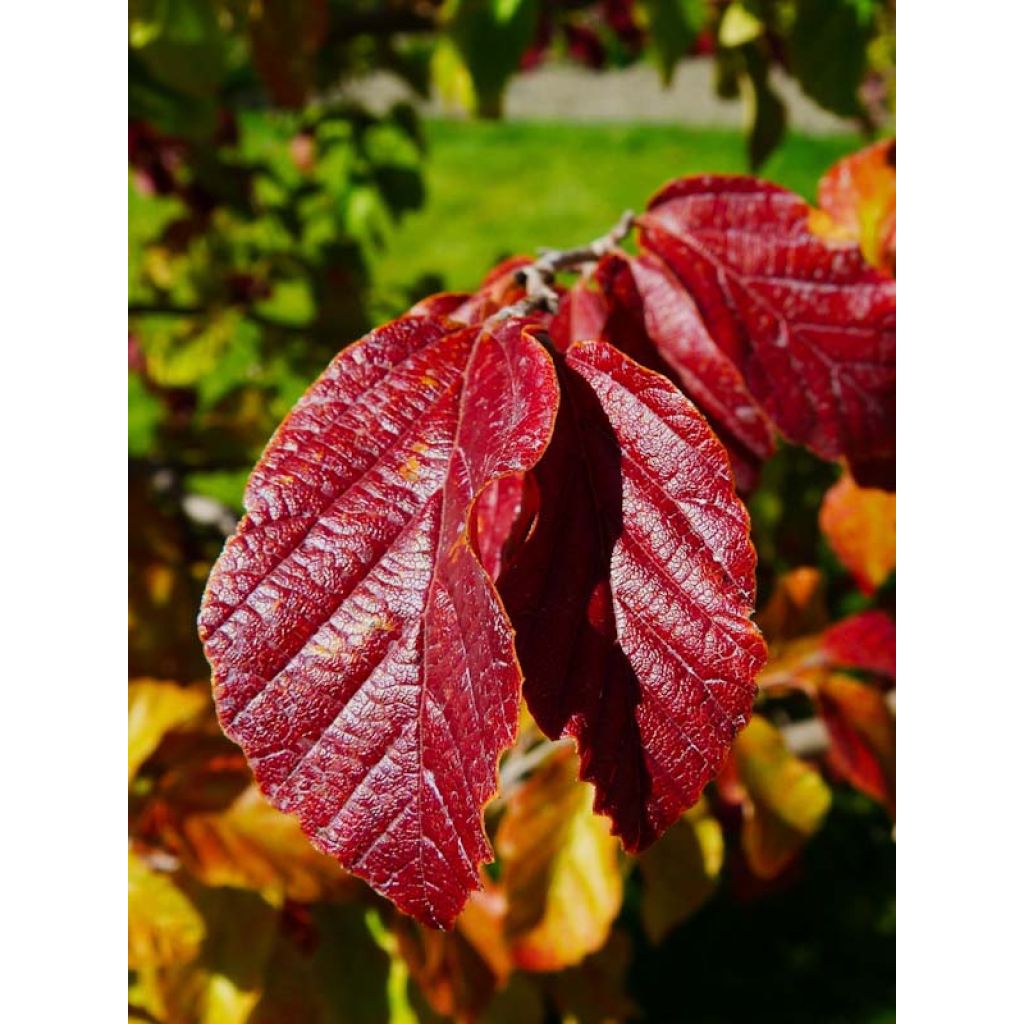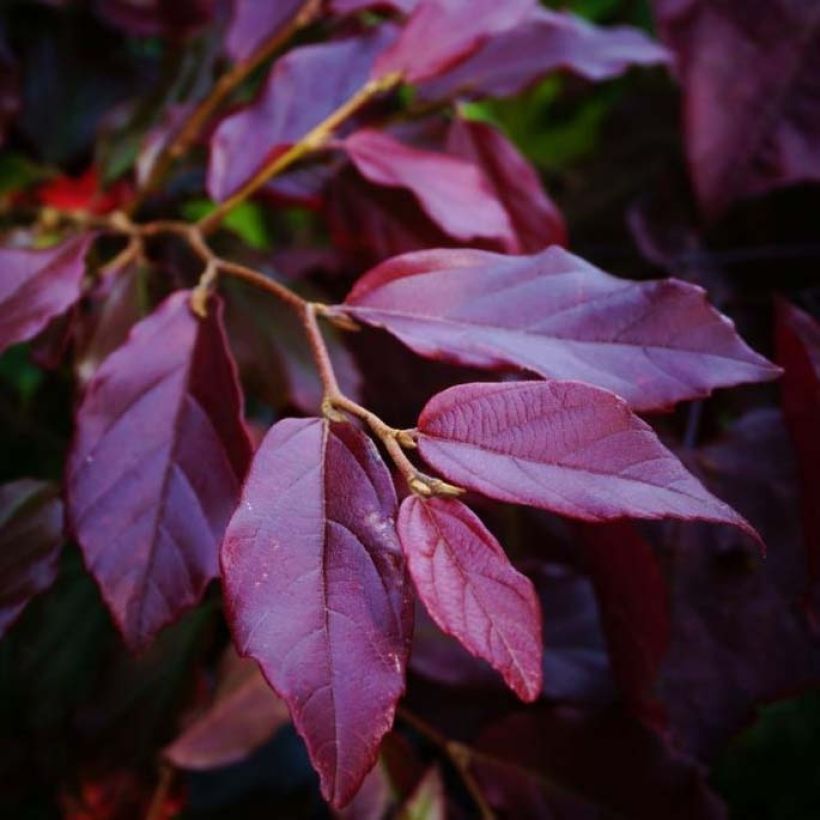

Sycoparrotia semidecidua Purple Haze


Sycoparrotia semidecidua Purple Haze


Sycoparrotia semidecidua Purple Haze


Sycoparrotia semidecidua Purple Haze


Sycoparrotia semidecidua Purple Haze


Sycoparrotia semidecidua Purple Haze


Sycoparrotia semidecidua Purple Haze


Sycoparrotia semidecidua Purple Haze


Sycoparrotia semidecidua Purple Haze
Sycoparrotia semidecidua Purple Haze
Sycoparrotia semidecidua Purple Haze
Sycoparrotia
Lovely tree in the making. It has already settled in nicely.
Nath44, 05/11/2024
Special offer!
Receive a €20 voucher for any order over €90 (excluding delivery costs, credit notes, and plastic-free options)!
1- Add your favorite plants to your cart.
2- Once you have reached €90, confirm your order (you can even choose the delivery date!).
3- As soon as your order is shipped, you will receive an email containing your voucher code, valid for 3 months (90 days).
Your voucher is unique and can only be used once, for any order with a minimum value of €20, excluding delivery costs.
Can be combined with other current offers, non-divisible and non-refundable.
Why not try an alternative variety in stock?
View all →This plant carries a 24 months recovery warranty
More information
We guarantee the quality of our plants for a full growing cycle, and will replace at our expense any plant that fails to recover under normal climatic and planting conditions.

Would this plant suit my garden?
Set up your Plantfit profile →
Description
Sycoparrotia semidecidua ‘Purple Haze’ belongs, like its two parents, to the Hamamelidaceae family. Less well-known than the deciduous Parrotia persisca, native to Northern Iran and Eastern Caucasus, its second parent, Sycopsis sinensis, native to the Chinese mountains, has the advantage of having evergreen foliage. The result of this marriage, discovered and described for the first time in Switzerland in 1968, is a large bush reaching 3 to 4 m (10 to 13ft) in height and 4 to 6 m (13 to 20ft) in width, with foliage and habit that exhibit intermediate characteristics between those of their two parents. With a narrow and upright habit when young, over time the bush develops a broadly ovate and very dense crown. Its foliage is deciduous below -10°C and its growth is moderately fast.
Sycoparrotia semidecidua ‘Purple Haze’ has a stout trunk and often spontaneously forms several trunks covered with a brown-grey bark. Its leaves, arranged alternately on the branches, are simple, elliptical to oblong, entire or toothed at the edges, shiny dark green on top and paler underneath. Dark red in spring, the leaves become dark green during the summer. Then autumn arrives, bringing an explosion of colours: the leaves of Sycoparrotia semidecidua ‘Purple Haze’ turn in succession from purple to scarlet red before becoming golden yellow. Finally, when winter arrives, it takes on violet hues. The flowering, devoid of fragrance, takes place in February-March, in the axils of the leaves, in the form of discreet, slightly red flowers arranged in clusters. Each flower is composed of yellow-green anthers surrounded by small violet-brown bracts. The fruit of this bush is a capsule.
Sycoparrotia semidecidua ‘Purple Haze’ finds its place naturally in a small garden, in an informal hedge or a shrub grove. Combine with e.g. heathers, camellias, Hamamelis, Leucothoe, and pieris in acidic soil. In neutral or slightly alkaline, well-drained soil, you can pair it with the 'Grace' smoke tree (Cotinus coggygria 'Grace'), the caramel tree (Cercidiphyllum japonicum), the winged spindle tree (Euonymus alatus), Nandina, tall autumn asters, and Japanese anemones to create a vibrant grove from September to November.
Sycoparrotia semidecidua Purple Haze in pictures




Plant habit
Flowering
Foliage
Botanical data
Sycoparrotia
semidecidua
Purple Haze
Hamamelidaceae
Sycoparrotia
Cultivar or hybrid
Other Parrotia - Persian Ironwood
View all →Planting and care
Plant Sycoparrotia semidecidua 'Purple Haze' in spring or autumn, in any deep, acidic, neutral, or even slightly alkaline soil, moist but not too dry, and well-drained. It will thrive in partial shade or full sun, in a sheltered position protected from dry and cold winds. It is commonly accepted that the autumn hues of the canopy will be more intense in soil with an acidic and moist tendency, and in a sunny but not scorching exposure.
Planting period
Intended location
Care
Planting & care advice
-
, onOrder confirmed
Reply from on Promesse de fleurs
Similar products
Haven't found what you were looking for?
Hardiness is the lowest winter temperature a plant can endure without suffering serious damage or even dying. However, hardiness is affected by location (a sheltered area, such as a patio), protection (winter cover) and soil type (hardiness is improved by well-drained soil).

Photo Sharing Terms & Conditions
In order to encourage gardeners to interact and share their experiences, Promesse de fleurs offers various media enabling content to be uploaded onto its Site - in particular via the ‘Photo sharing’ module.
The User agrees to refrain from:
- Posting any content that is illegal, prejudicial, insulting, racist, inciteful to hatred, revisionist, contrary to public decency, that infringes on privacy or on the privacy rights of third parties, in particular the publicity rights of persons and goods, intellectual property rights, or the right to privacy.
- Submitting content on behalf of a third party;
- Impersonate the identity of a third party and/or publish any personal information about a third party;
In general, the User undertakes to refrain from any unethical behaviour.
All Content (in particular text, comments, files, images, photos, videos, creative works, etc.), which may be subject to property or intellectual property rights, image or other private rights, shall remain the property of the User, subject to the limited rights granted by the terms of the licence granted by Promesse de fleurs as stated below. Users are at liberty to publish or not to publish such Content on the Site, notably via the ‘Photo Sharing’ facility, and accept that this Content shall be made public and freely accessible, notably on the Internet.
Users further acknowledge, undertake to have ,and guarantee that they hold all necessary rights and permissions to publish such material on the Site, in particular with regard to the legislation in force pertaining to any privacy, property, intellectual property, image, or contractual rights, or rights of any other nature. By publishing such Content on the Site, Users acknowledge accepting full liability as publishers of the Content within the meaning of the law, and grant Promesse de fleurs, free of charge, an inclusive, worldwide licence for the said Content for the entire duration of its publication, including all reproduction, representation, up/downloading, displaying, performing, transmission, and storage rights.
Users also grant permission for their name to be linked to the Content and accept that this link may not always be made available.
By engaging in posting material, Users consent to their Content becoming automatically accessible on the Internet, in particular on other sites and/or blogs and/or web pages of the Promesse de fleurs site, including in particular social pages and the Promesse de fleurs catalogue.
Users may secure the removal of entrusted content free of charge by issuing a simple request via our contact form.
The flowering period indicated on our website applies to countries and regions located in USDA zone 8 (France, the United Kingdom, Ireland, the Netherlands, etc.)
It will vary according to where you live:
- In zones 9 to 10 (Italy, Spain, Greece, etc.), flowering will occur about 2 to 4 weeks earlier.
- In zones 6 to 7 (Germany, Poland, Slovenia, and lower mountainous regions), flowering will be delayed by 2 to 3 weeks.
- In zone 5 (Central Europe, Scandinavia), blooming will be delayed by 3 to 5 weeks.
In temperate climates, pruning of spring-flowering shrubs (forsythia, spireas, etc.) should be done just after flowering.
Pruning of summer-flowering shrubs (Indian Lilac, Perovskia, etc.) can be done in winter or spring.
In cold regions as well as with frost-sensitive plants, avoid pruning too early when severe frosts may still occur.
The planting period indicated on our website applies to countries and regions located in USDA zone 8 (France, United Kingdom, Ireland, Netherlands).
It will vary according to where you live:
- In Mediterranean zones (Marseille, Madrid, Milan, etc.), autumn and winter are the best planting periods.
- In continental zones (Strasbourg, Munich, Vienna, etc.), delay planting by 2 to 3 weeks in spring and bring it forward by 2 to 4 weeks in autumn.
- In mountainous regions (the Alps, Pyrenees, Carpathians, etc.), it is best to plant in late spring (May-June) or late summer (August-September).
The harvesting period indicated on our website applies to countries and regions in USDA zone 8 (France, England, Ireland, the Netherlands).
In colder areas (Scandinavia, Poland, Austria...) fruit and vegetable harvests are likely to be delayed by 3-4 weeks.
In warmer areas (Italy, Spain, Greece, etc.), harvesting will probably take place earlier, depending on weather conditions.
The sowing periods indicated on our website apply to countries and regions within USDA Zone 8 (France, UK, Ireland, Netherlands).
In colder areas (Scandinavia, Poland, Austria...), delay any outdoor sowing by 3-4 weeks, or sow under glass.
In warmer climes (Italy, Spain, Greece, etc.), bring outdoor sowing forward by a few weeks.






















































